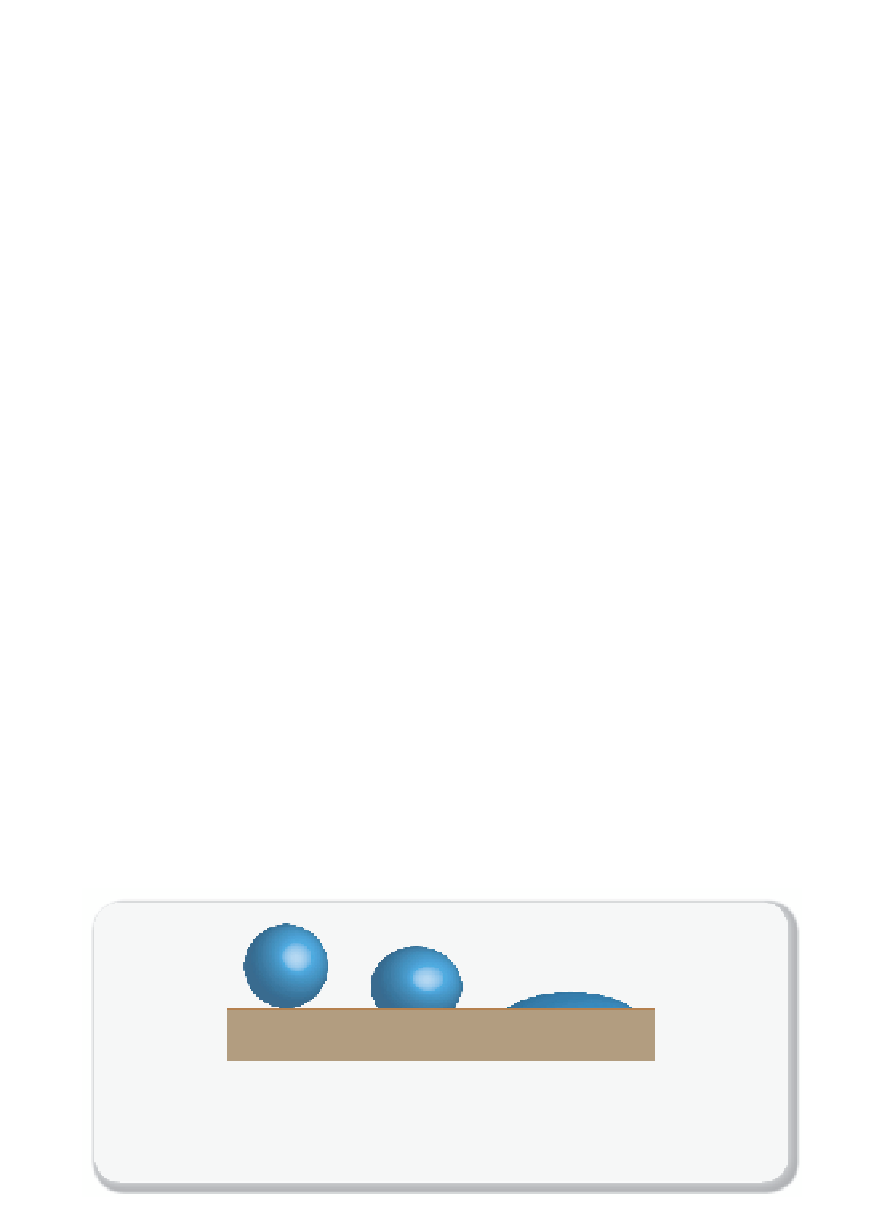Environmental Engineering Reference
In-Depth Information
Section 4
Wetting and capillary effects
During the initial stage of the injection, a plume of supercritical CO
2
will
form and this plume will only very slowly dissolve into the brine. Therefore,
the supercritical CO
2
and brine will for a very long time behave as two
separate phases. The fact that we have two phases will have profound
consequences on both the static and dynamic behavior of these fl uids in
the pores of a rock.
Wetting
Wetting
is the ability of a fl uid to wet a substrate. If a fl uid wets a sub-
strate it will spread as a thin fi lm, while a non-wetting fl uid will form a
droplet (see
Figure 9.4.1
). Fluids can also partially wet a substrate, and
this wetting behavior is quantifi ed by the contact angle.
Suppose we know the liquid-gas (
γ
LG
), gas-solid (
γ
SG
), and liquid-
solid (
γ
LS
) surface tensions and our surface is perfectly smooth. In equi-
librium there should be no net force on our droplet, which implies that at
the point where the solid, gas, and liquid meet, the net force per unit
length should be zero (
Figure 9.4.2
), or:
γ
=
γ
+ γ
cos
θ ,
SG
SL
LG
where
is the contact angle. This is the well-known Young-Laplace
equation.
θ
Figure 9.4.1
Wetting a substrate
Differences in wetting behavior: non-wetting (left), partial wetting (middle), and nearly
complete wetting (right).




Search WWH ::

Custom Search